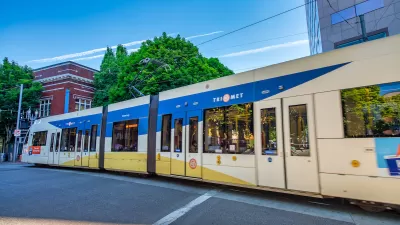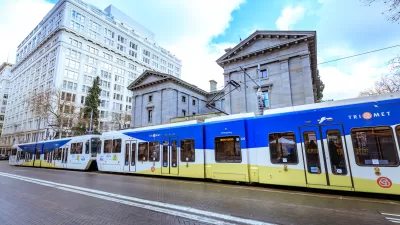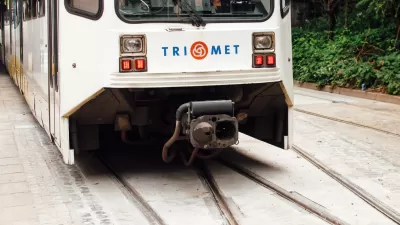Residents and visitors to downtown Portland have long enjoyed taking buses, LRT, and streetcar within a perimeter known as Fareless Square at no cost. While the MAX and streetcar will remain 'fareless', the bus will cost you. New name: Free Rail Zone
While the elimination of the free, downtown bus service may be missed by some, it will, according to TriMet, make taking the bus "less confusing" since most buses go beyond the free area. However, the same can be said of the Light Rail Transit known as MAX.
Fareless Square "was created in 1975 to reduce emissions and auto traffic in the downtown area. Though it has attracted transit users, the square has been faulted for encouraging crime and annoyances on buses and trains. It also made it difficult to collect fares from bus riders who may board in Fareless Square but continue on beyond the zone."
From TriMet:
"The Free Rail Zone includes most of downtown Portland (within the boundaries of the Willamette River, NW Irving and I-405), as well as MAX stations from the Rose Quarter to Lloyd Center. Look for Free Rail Zone emblems at rail stations within these boundaries."
From Why we changed Fareless Square to the Free Rail Zone, August 2009:
"This summer, we held open houses and asked for public feedback on the rail-only proposal, resulting in more than 600 comments. 51% supported changing Fareless Square to rail-only, while 21% wanted to keep it as-is, 11% supported eliminating it completely, and 9% wanted to keep a fare-free zone in some form."
Thanks to Ed Braddy
FULL STORY: Beginning Sunday, buses are no longer free in downtown Portland

Alabama: Trump Terminates Settlements for Black Communities Harmed By Raw Sewage
Trump deemed the landmark civil rights agreement “illegal DEI and environmental justice policy.”

Planetizen Federal Action Tracker
A weekly monitor of how Trump’s orders and actions are impacting planners and planning in America.

The 120 Year Old Tiny Home Villages That Sheltered San Francisco’s Earthquake Refugees
More than a century ago, San Francisco mobilized to house thousands of residents displaced by the 1906 earthquake. Could their strategy offer a model for the present?

In Both Crashes and Crime, Public Transportation is Far Safer than Driving
Contrary to popular assumptions, public transportation has far lower crash and crime rates than automobile travel. For safer communities, improve and encourage transit travel.

Report: Zoning Reforms Should Complement Nashville’s Ambitious Transit Plan
Without reform, restrictive zoning codes will limit the impact of the city’s planned transit expansion and could exclude some of the residents who depend on transit the most.

Judge Orders Release of Frozen IRA, IIJA Funding
The decision is a victory for environmental groups who charged that freezing funds for critical infrastructure and disaster response programs caused “real and irreparable harm” to communities.
Urban Design for Planners 1: Software Tools
This six-course series explores essential urban design concepts using open source software and equips planners with the tools they need to participate fully in the urban design process.
Planning for Universal Design
Learn the tools for implementing Universal Design in planning regulations.
Clanton & Associates, Inc.
Jessamine County Fiscal Court
Institute for Housing and Urban Development Studies (IHS)
City of Grandview
Harvard GSD Executive Education
Toledo-Lucas County Plan Commissions
Salt Lake City
NYU Wagner Graduate School of Public Service





























